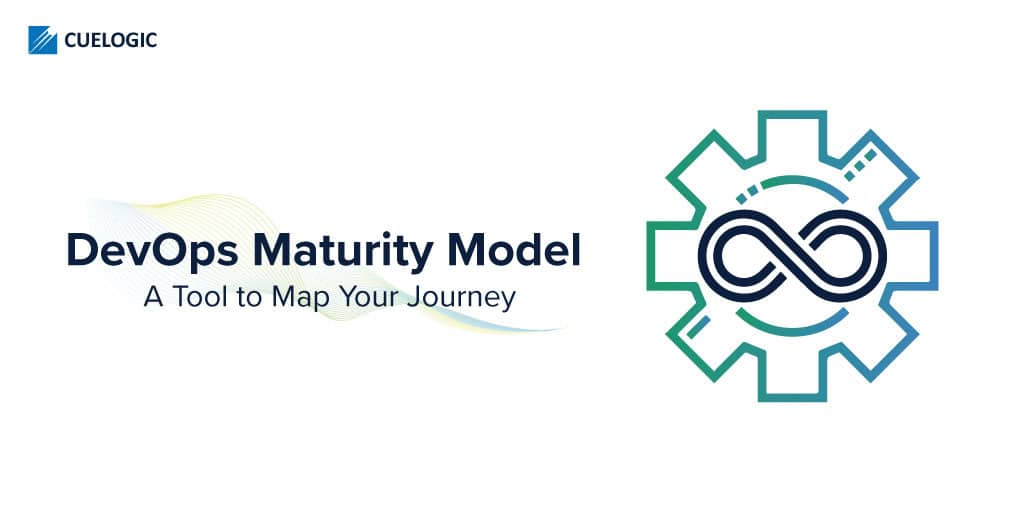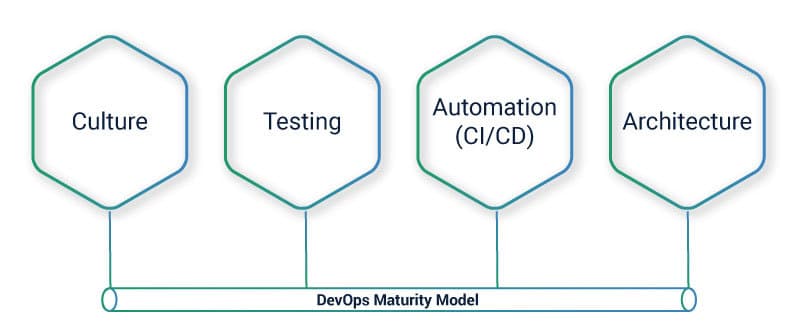

DevOps has transformed the way the IT industry operates by redefining the paradigms of workflow and method chain. As DevOps enters its second decade, the scope and focus of its application are expanding well beyond product delivery. One of the major impediments in any organization’s DevOps transition is the outlook of using it as a goal or a destination. Selecting the right DevOps services can make all the difference in this area, and that’s where the DevOps Maturity Model comes into play.
The DevOps journey is now at a stage where most companies have implemented it at some level and in some form in their software development and IT processes. However, the extent and evolution of DevOps have a direct bearing on organizations’ ability to tap into their full potential.
According to the State of DevOps 2020 report, organizations with high DevOps evolution are capable of addressing and fixing critical vulnerabilities in less than 24 hours whereas for their less mature counterparts this ability is curtailed by 75%.
The DevOps Maturity Model allows you to view DevOps practices in a new light. Let’s examine the role of this model in bringing about a change, be it gaining the right perspective on DevOps practices or using them optimally.
DevOps Maturity is a pattern that establishes the position of an organization in the DevOps process, and by extension, also determines what more needs to be done to achieve certain pre-defined, aspired outcomes. Embracing DevOps as a continuous journey and not a destination is crucial to attaining DevOps maturity.
That’s because the DevOps Maturity Model is designed to manage growth through continuous training covering all organizational aspects, including but not limited to development and operations. This training helps boost skills and aptitudes needed to adopt DevOps in true earnest, which, in turn, results in an enhanced capacity to tackle challenges of greater complexity and scale.
To be able to assess an organization’s standing in its DevOps journey and chalking out a roadmap for improvement, DevOps Maturity Model focuses on the effectiveness of organizational processes such as adopting certain business practices and zeroing in on capabilities required to achieve higher maturity levels and improve performance.
To achieve this through continuous learning, the DevOps Maturity Model relies on organizational perspectives and access to both development and operations teams.
When on the path to embracing or augmenting DevOps capabilities, every organization has a host of questions, doubts, and dilemmas. How is a successful DevOps adoption defined? When can they claim that they’re practicing DevOps? When can they call their DevOps practices mature? And most importantly, how to get there?
To provide clarity, we sum it up in four key tenets of DevOps that all mature ecosystems have in common. This can be considered a benchmark for assessing the maturity of DevOps practices:

DevOps must be looked at as a cultural shift more than a technological one. Leveraging the potential of these practices not only requires efficient cross-functional collaborations but also a pervasive outlook on the organizational level capable of embracing and overcoming rapid and repeated failures. Getting all stakeholders on board is also equally critical to ensure that the shift to DevOps practices isn’t self-sabotaged or hindered in any way.
According to a Gartner report, three-fourth of DevOps initiatives are expected to fail meeting their goals, owing to an organizational inability to foster a culture ready to embrace this change. The report cites unrealistic expectations, lack of considerations for business outcomes, inadequate collaboration, and the reluctance of staff to get behind the change as the key factors for these failures. While some organizations may be slated to fail, yours doesn’t have to be one of them. This can be ensured by adhering to the following guidelines for fostering a culture ready for DevOps:
Releasing code weekly, daily, or even on an hourly basis is fast becoming a norm. The concept of continuous testing has evolved out of a need to perform testing and maintenance at a much faster rate for the sake of keeping up the cadence of releases.
With applications gaining prominence in their role in lending a competitive edge to business processes, the criticality of achieving the right balance of speed and accuracy is being acknowledged now more than ever. Any performance or build quality issues can hamper the end-user experience. On the other hand, delivery delays directly translate to losing the competitive edge. Both these factors continue to be a potential roadblock in implementing continuous testing in true earnest.
On the flip side, getting results of continuous testing right means accelerating the time-to-market, improving code quality, developing a mechanism for continuous feedback, and eliminating the gap between development, testing, and operations.
An extremely high level of maturity in DevOps can set you up for using continuous testing optimally and extracting maximum value from it.
DevOps maturity on the testing front is reflected in the following processes and practices:
The goal of automation or CI/CD is to enhance software quality by pre-emptive elimination of issues through continuous testing. This is made possible by the ability to detect quality issues and defects in code changes on a smaller level early on in the process. As a result, the feedback loop between the users and development teams is shortened drastically.
Besides, CI/CD also enables development teams to commit changes more frequently without compromising stability. The approach is primarily seen as a best practice for agile development but it also serves as fundamental to the robustness of DevOps initiatives. If you need speed and quality at the same time, eliminating manual steps or cumbersome processes is your best bet at achieving it.
Automation and CI/CD serve as a proxy for identifying these elements that make processes sluggish, and correct course.
While automation plays a key role in the effectiveness of DevOps processes, it can yield results only when based on well-defined workflows. Automating a process that is non-optimal or still undefined can make the inherent processes more pronounced and interfere with DevOps’ ability to work optimally.
On this count, DevOps maturity is indicated by a host of factors:
An organization’s ability to mature its DevOps processes is governed by the robustness of its foundations – determined by application architecture. It is one of the determining factors in whether an organization will be able to leverage DevOps for rapid-release cadence. If your system is not designed to support quick, frequent, and easy testing, you will end up with bottlenecks no matter what.
The same holds for deployment as well. The challenge also is that there is no one-size-fits-all architecture to support DevOps maturity. Different styles support different goals. You must choose one that fits your needs, aligns with your goals, and is compatible with development technologies and tech infrastructure.
For a DevOps maturity, you’re your strive for the following architectural practices:
The DevOps Maturity Model comprises five stages. To able to get a reality check on their maturity levels, organizations should not lose focus of these:

A complete DevOps Maturity Model operates on three levels: evaluating the state of skills, identifying scope for growth, outlining a roadmap to achieve DevOps goals. To be able to do that, the DevOps Maturity Model must consist of three key components:
The DevOps maturity for application is defined by how secure the code development process is, right from development to production stage. Delivering on this aspect of maturity requires extensive builds, tests, security scans, code coverage, and constant monitoring of the automated elements in the deployment pipeline.
To measure DevOps maturity by data you have to take into account the ability of DataOps to take action for automating data changes and automatically verify functionality.
DevOps maturity by infrastructure is centered on the ability to ease and streamline infrastructure handling skills related to automation and facilitating self-service vis-à-vis store environments, especially in connection with other businesses.
There are a host of parameters that need to be examined at every step of the way to assess an organization’s DevOps maturity, and more importantly, achieve it. Some of the key criteria to map using the DevOps Metrics are:
The answer to these questions will give you a realistic idea of where you stand in your DevOps maturity journey.
But why is this important? Here are a few key advantages of continuously mapping your DevOps maturity:
The DevOps Maturity Model can help you enhance the efficiency of the entire workflow, decrease the time-to-market while improving release cycles, augmenting product quality and test accuracy. With clear insights on where you stand in your DevOps journey, you are better equipped to evolve into a highly matured environment on an organizational level in a shorter time span.